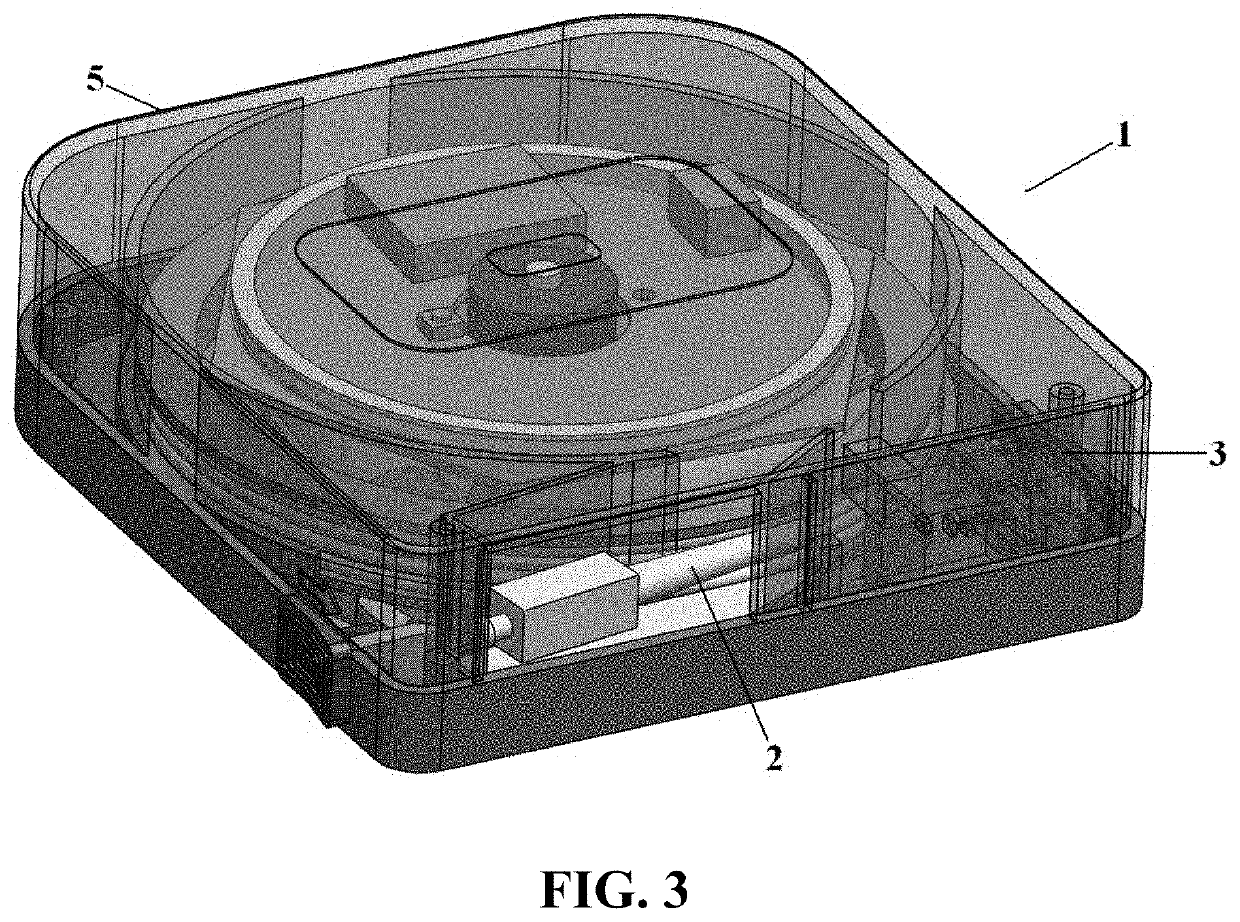Optical time-domain reflectometer (OTDR) with integrated, retractable launch cable
a technology of optical time domain reflectometer and launch cable, which is applied in the direction of instrumentation, optical/optical waveguide device testing, structural/machine measurement, etc., can solve the problems of affecting the value of otdr, affecting the resolution, and the lowest-reflectance fiber optic connector available today has some loss and reflectance, so as to facilitate the detachment and replacement of the launch cable
- Summary
- Abstract
- Description
- Claims
- Application Information
AI Technical Summary
Benefits of technology
Problems solved by technology
Method used
Image
Examples
Embodiment Construction
[0029]In FIG. 1, an Optical Time-Domain Reflectometer (OTDR) with an integrated but detachable Launch Cable, designed to work as standalone instrument or as a Remote Unit (RU) with external devices, is shown (1), which is an object of the present invention and will be referred to simply as Device (1) of this invention. In one of its OTDR modes, device (1) can be used to certify or fault locate FTTx PON or point-to-point fiber optic links that may include features or events such as fiber optic connections, fusion splices, mechanical splices, and optical splitters, in addition to faults such as optical fiber cable breaks and macrobends. Device (1) OTDR measurements may include end-to-end link loss and ORL, as well as the location, loss, and reflectance of individual events (including the first link connection). Without removing the launch cable, Device (1) may also be used in light source mode to measure end-to-end link loss at multiple wavelengths, or in visual fault locate (VFL) mod...
PUM
 Login to View More
Login to View More Abstract
Description
Claims
Application Information
 Login to View More
Login to View More - R&D Engineer
- R&D Manager
- IP Professional
- Industry Leading Data Capabilities
- Powerful AI technology
- Patent DNA Extraction
Browse by: Latest US Patents, China's latest patents, Technical Efficacy Thesaurus, Application Domain, Technology Topic, Popular Technical Reports.
© 2024 PatSnap. All rights reserved.Legal|Privacy policy|Modern Slavery Act Transparency Statement|Sitemap|About US| Contact US: help@patsnap.com










